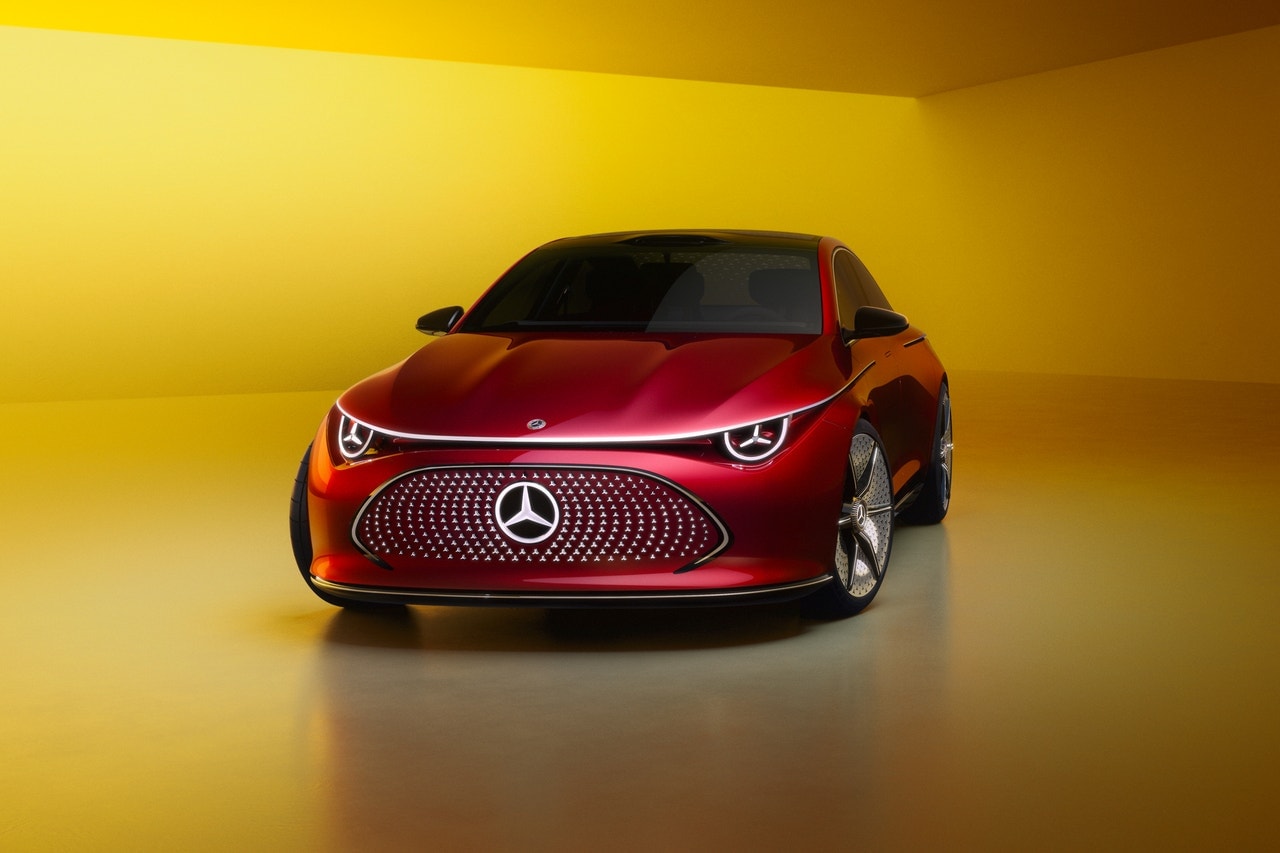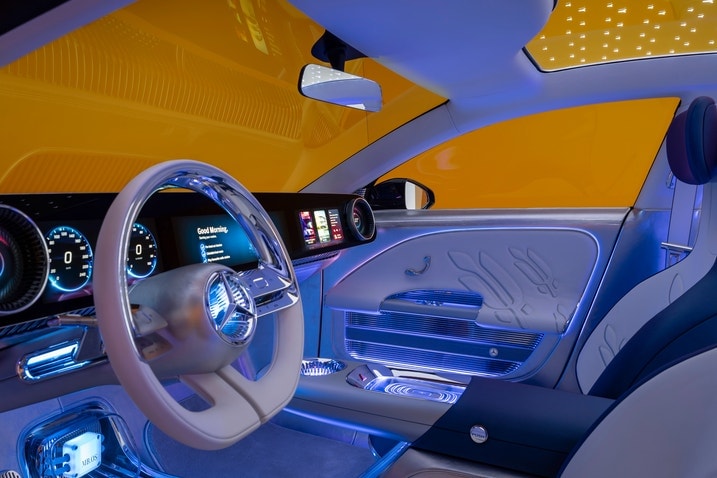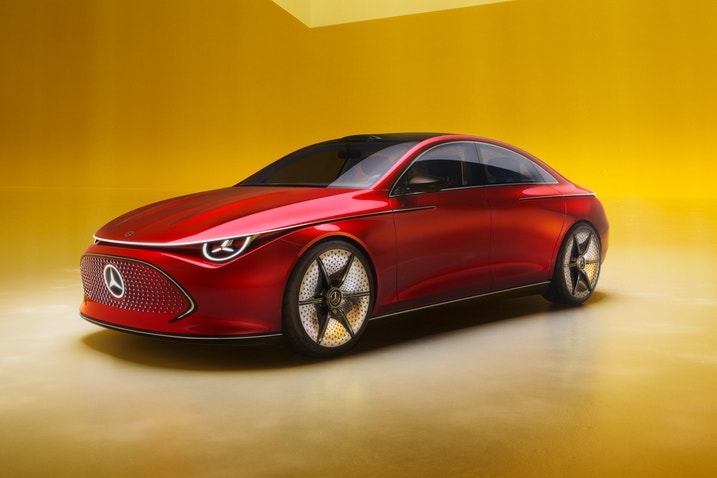- New compact EV from Mercedes targets big range.
- The CLA concept also debuts a new platform that will underpin four new cars.
- Big efficiency and sustainability efforts are going to be core to Mercedes’ future products.
Mercedes’ New Concept CLA Coupe Targets Big Range, Efficiency in a Smaller Package
Compact EVs with stunning efficiency might just be the future
Meet the new Concept CLA coupe, a fresh little concept car that bucks a recent trend for Mercedes-Benz. Since the EQS’ introduction, Mercedes has been focusing on the high end of the market with all of its EVs, but the CLA concept you see here is intended to be actually obtainable. It’s a low-slung four-door coupe that previews a product range of four cars that are based on Benz’s new EV-only Mercedes-Benz Modular Architecture (MMA) platform, and it’s aimed directly at the Tesla Model 3, BMW i4 and Hyundai Ioniq 6.
The A-shape, shark nose-style front grille, hundreds of Mercedes-Benz logos dotted throughout the interior and exterior of the car, and an emphasis on smooth lines define the CLA’s look. Don’t expect the hollowed-out three-pointed star head- and tail lights or the chrome strip that runs along the shoulder of the CLA to make it to production. The overall proportions and lack of fussy lines, however, will inform what the eventual production cars look like.
The CLA concept you see here won’t necessarily be the first car on the new MMA platform to make it into production, but the design elements will be spread across a sedan, a shooting brake body style (which we likely won’t get in the States), and two SUVs that resemble the GLA and GLB in size and shape. All of the new cars on the MMA platform will bake learnings from the hyper-efficient EQXX, the concept that squeezed 620 miles out of an approximately 100-kWh battery, into the real deal.
The efficiency numbers are big, too. Mercedes is targeting 5.2 miles per kWh with the new CLA concept. Think of miles per kWh as miles per gallon in a gas car — the bigger that number, the more efficient your EV is and the more range you can then squeeze from your battery. For context, the Hyundai Ioniq 6, which is an efficient EV, gets between 3 and 3.5 miles per kWh.
Overall range for the CLA is estimated at 466 miles on Europe’s WLTP cycle, but expect that figure to fall once the EPA does its testing. The new platform will also be built around an 800-volt architecture, and that enables the CLA to maintain super-fast DC charging times. Mercedes says charging peaks at 250 kW and that the CLA will be able to add 248 miles of range in just 15 minutes.
A new operating system called MB.OS — which integrates AI and machine learning — will run the car’s software while MBUX will still serve as the car’s user interface. The concept also features a water-cooled processor that’s shown off in a little clear case just beneath the dashboard. Neat touches like that dot the CLA’s interior — one-piece seats covered in sustainably sourced Nappa leather, a massive pillar-to-pillar display that floats above the dash, and a glass roof embedded with three-pointed stars. It’s not a large car, but after having sat in both the front and rear of the CLA concept, we can say it feels far roomier than the current gas-powered CLA.
The CLA’s interior is also awash with sustainable materials. Some of the panels, like the one on the center console, are made out of a refined and hardened paper, the carpets are made from bamboo fibers, and the textile for the armrests is made from recycled PET. All of this is part of an effort Mercedes is calling Ambition 2039, an initiative that looks to reduce product-chain CO2 by more than 40% come that year.
The efficiency numbers are big and the sustainability ambitions are high with the CLA concept, but the most interesting part is Mercedes attempting to bring major range gains in a compact car segment. We’ll see the first production version of a car on the new MMA platform near the end of 2024 when we’ll get a clearer picture of details like pricing, availability, and just how much of this concept actually makes it to production.
Edmunds says
Efficiency of 5.2 miles per kWh would be fantastic, and we hope to see numbers like that a lot more frequently as automakers continue to innovate their EV platforms.









 by
by